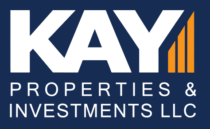By Jason Salmon
Senior Vice President and Managing Director of Research Kay Properties and Investments, LLC
The basics: If you own investment real estate—that means a rental condo or home, apartment building, a commercial building, raw or vacant land or otherwise—you do not have to pay taxes when you sell the property. Uncle Sam has had section 1031 of the Internal Revenue Code in place since 1921. Also known as a 1031 exchange, this provision allows a seller of property held for investment or business purposes to “replace” their “relinquished” property in a “like-kind” exchange.
Implications of paying taxes: In certain cases, taxes on highly appreciated real estate in high-tax states can pack a pretty mean punch; potentially around 50%. This is comprised of taxes for long-term capital gains (up to 20%), depreciation recapture tax (25%), the net investment income tax (NIIT) that was embedded in the Affordable Care Act (3.8%), and state tax (from 0-13.3% depending on the state you live in).
By the numbers: As an example, if you owned an investment property valued at $1 million that was yielding an annual return of 5%, and when you sold the property and paid the taxes (let’s say 50% for illustrative purposes), you would have been left with only $500,000. You would have to go considerably higher up the risk- spectrum to receive a 10% return in order to receive the same $50,000 of projected income for the year. Many would say, that from a financial standpoint, it is wise to exchange your property, defer your taxes and keep your full $1 million working for you.
Death and taxes: In a 1031 exchange, the real estate basis is being carried forward. It will continue to do so with all subsequent exchanges. When a property owner passes away, their beneficiaries receive a stepped-up basis. This can prove to be quite advantageous when considering estate planning as the capital gains taxes are eliminated.
–Message to the reader– I realize that some of the terms and content in the first part of this article may seem technical. Notwithstanding, if you own investment real estate, this is important. Your CPA and attorney will be familiar with the jargon and with the subject matter. If they are not, find another CPA and/or attorney.
Maximizing value: Many private real estate investors have a buy and hold approach; and this conventional wisdom is a sound strategy. If we look to the institutional real estate investment model (that followed by university endowments, pension funds, foreign governments and real estate investment trusts), the exit is a vital part of how a deal is underwritten. It is tremendously important to seek to sell an asset when opportunity presents itself. Having the ability to monetize your asset and get a potential premium in the marketplace makes sense, especially when a tool as valuable as the 1031 exchange can play a part in taking real estate investing to the next level.
Options: There are several directions to go for real estate investors in a 1031 exchange.
One way is to find an asset with active management responsibilities—that means tenants, toilets and trash. If an investor wants a hands-on property with day-to-day landlord responsibilities, this would be the appropriate way to go.
Another is a passive real estate investment—a net-leased asset, specifically NNN (triple-net) real estate passes through taxes, insurance and property maintenance expenses to the tenant that occupies the property. These types of investments can be attractive, but the investor must be sophisticated and understand the space (i.e., lease negotiations for renewals, how inflation affects value, financing implications, etc.).
There are also truly passive real estate investments that allow those in 1031 exchanges (as well as those wishing to make a direct cash investment) to own a fractional interest in a large institutional asset or portfolio of assets. Utilizing this strategy allows an investor to diversify across multiple asset classes, geographies and asset managers. The structure that is often used for this model is a Delaware Statutory Trust or DST.
Summary: The 1031 exchange is a fantastic tool that many real estate investors have employed for years. It is used for $100,000 transactions; it is used for $100,000,000 transactions—and everything in between. The process can be quite straightforward with the guidance of a professional that has expertise in the space. This topic will be expanded upon in future articles with the hope that you will gain insight on how to make the most of your real estate investments.
Note: The content of this article is not meant to be tax or legal advice. Always consult your CPA and attorney before making any investment decisions.
For more information or feedback, contact Jason Salmon via email at: jason@kpi1031.com as well as visit the Kay Properties and Investments, LLC website at www.kpi1031.com
IRC Section 1031, IRC Section 1033 and IRC Section 721 are complex tax codes therefore you should consult your tax or legal professional for details regarding your situation. This material is not intended as tax or legal advice.
This material does not constitute an offer to sell nor a solicitation of an offer to buy any security. Such offers can be made only by the confidential Private Placement Memorandum (the “Memorandum”). Please be aware that this material cannot and does not replace the Memorandum and is qualified in its entirety by the Memorandum. This material contains information that has been obtained from sources believed to be reliable. However, Kay Properties and Investments, LLC, Growth Capital Services and their representatives do not guarantee the accuracy and validity of the information herein. Investors should perform their own investigations before considering any investment.
There are material risks associated with investing in real estate, Delaware Statutory Trust (DST) properties and real estate securities. These include tenant vacancies, potential loss of investment principal, that past performance is not a guarantee of future results, that potential cash flow, potential returns and potential appreciation are not guaranteed in any way and that real estate is typically an illiquid investment. For an investor to qualify for any type of investment, there are both financial requirements and suitability requirements that must match specific objectives, goals and risk tolerances.
Securities products offered through Growth Capital Services, member FINRA/SIPC. Kay Properties and Investments, LLC is independent of Growth Capital Services. All information provided is for educational purposes only. The material contained herein does not constitute an offer to sell and is not an offer to buy real estate, real estate offerings, DST properties or securities. Such offers are made only by a sponsor’s memorandum, which is always controlling and available to accredited investors and accredited entities only. There are material risks associated with the ownership of real estate, real estate offerings and DST properties, including but not limited to, tenant vacancies, loss of entire principal amount invested, and that potential distributions, cash flows, returns, and appreciation are not guaranteed.
All information herein has been prepared from sources believed to be reliable, but is not guaranteed by Growth Capital Services and Kay Properties and Investments and is not a complete summary or statement of all available data necessary for making an investment decision. Any information provided is for informational purposes only and does not constitute a recommendation.

